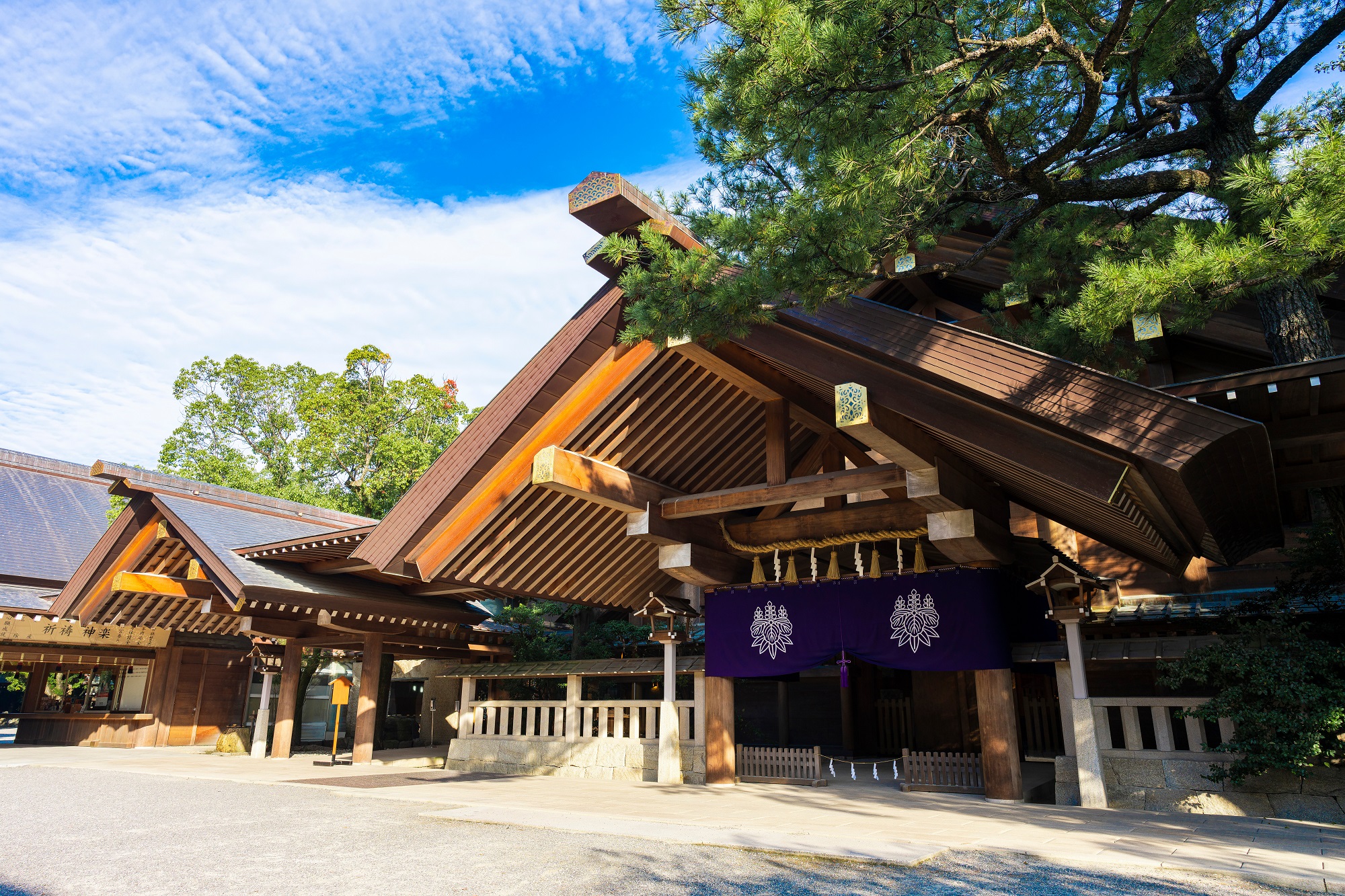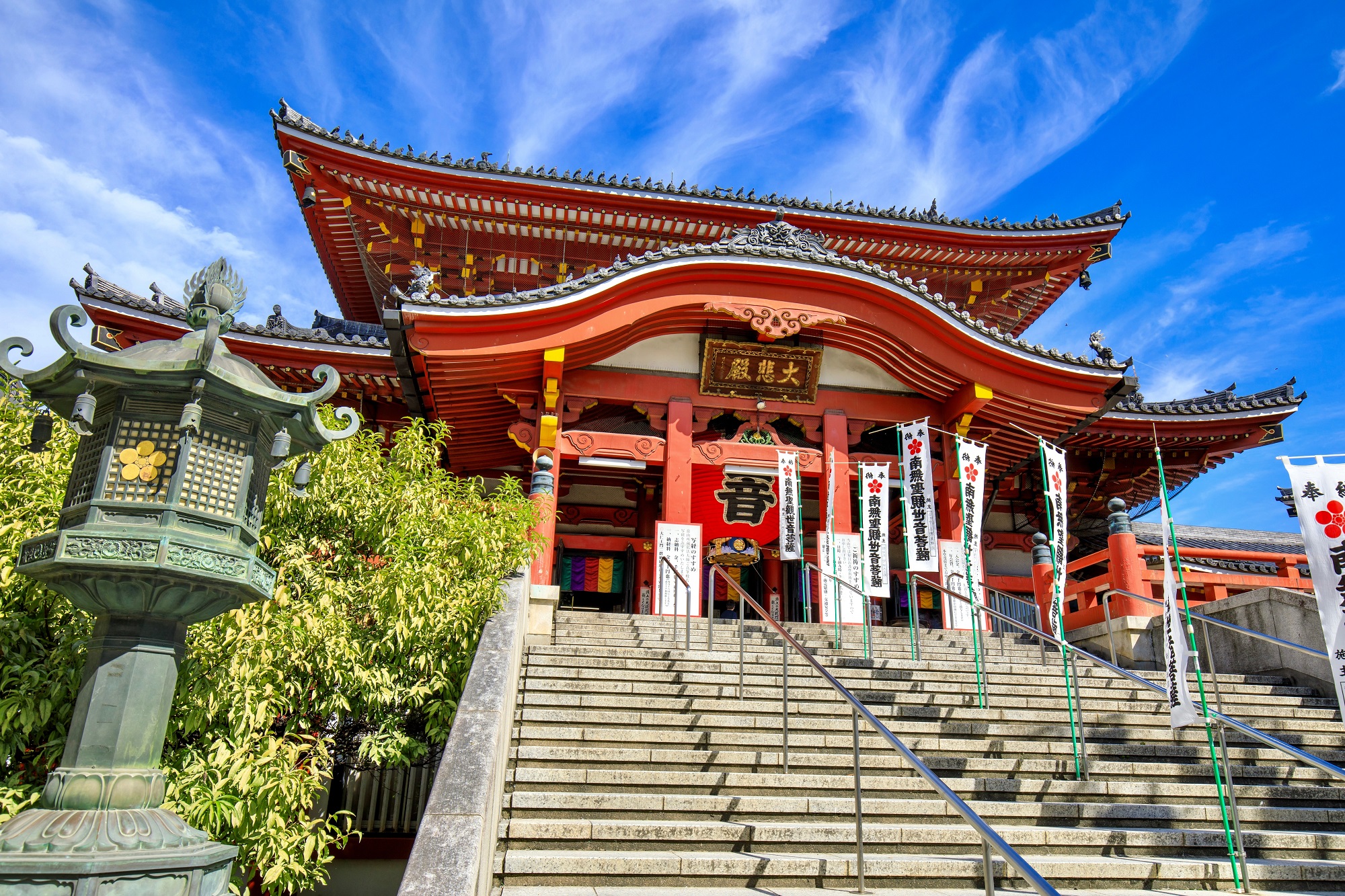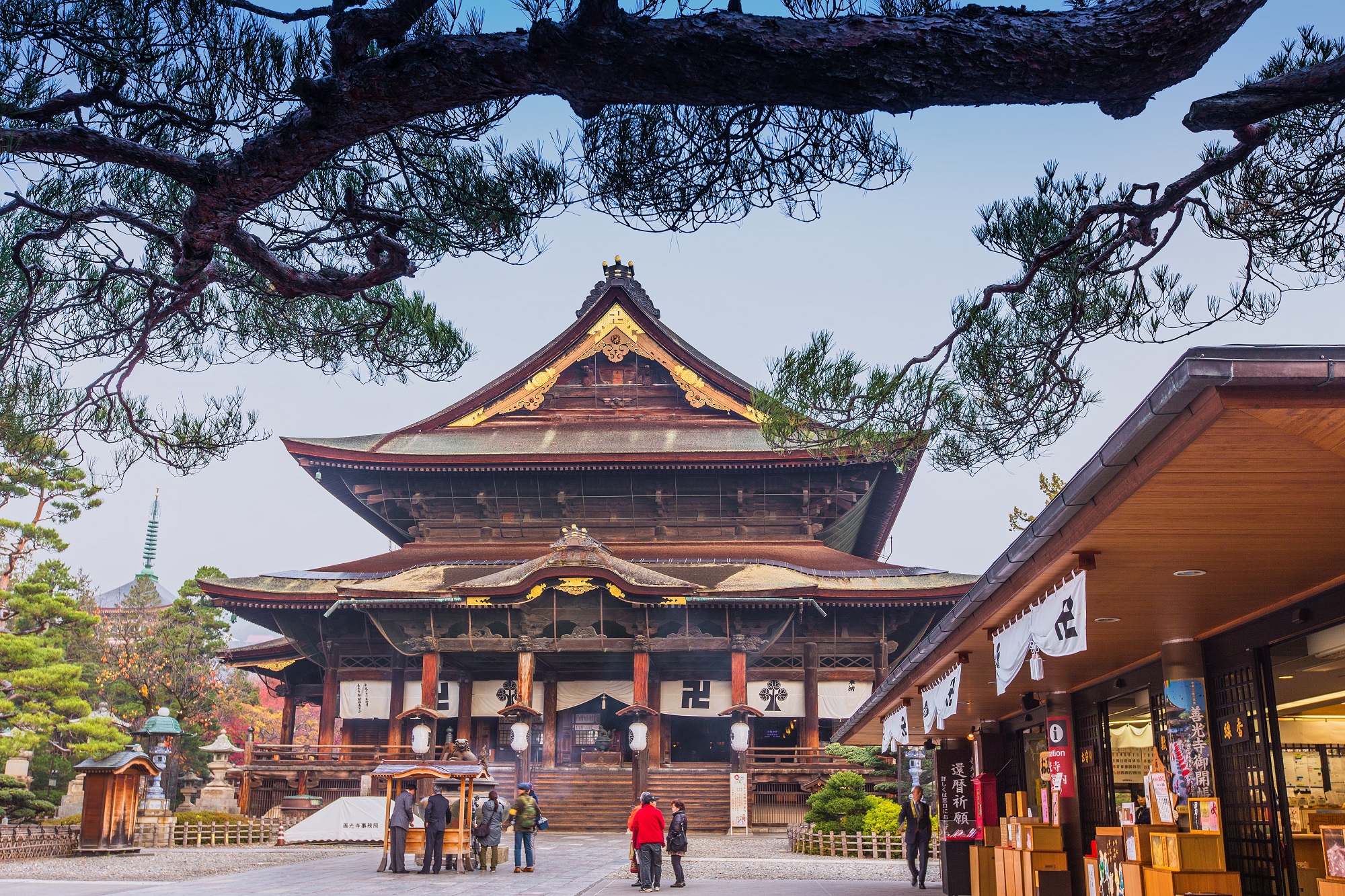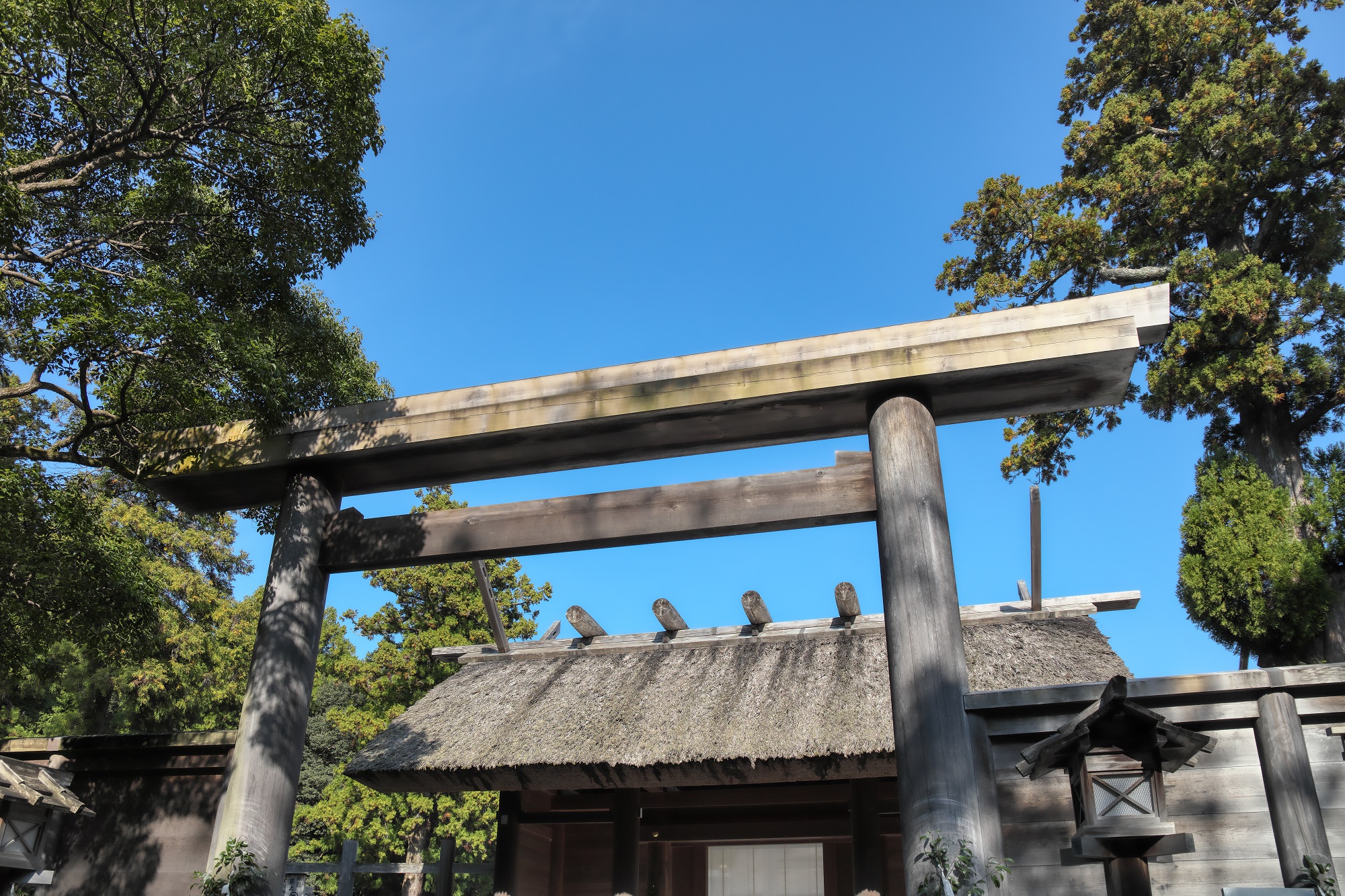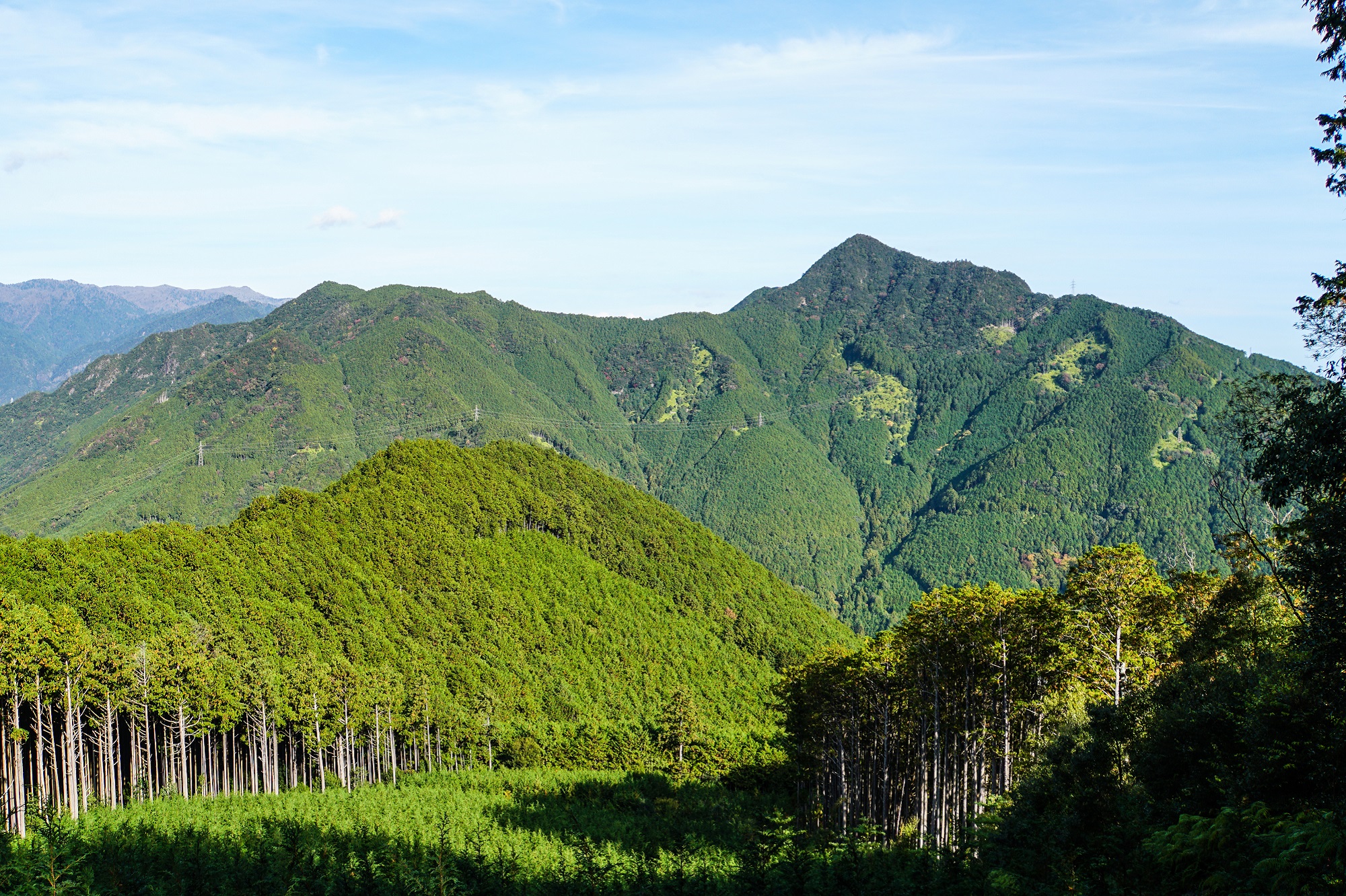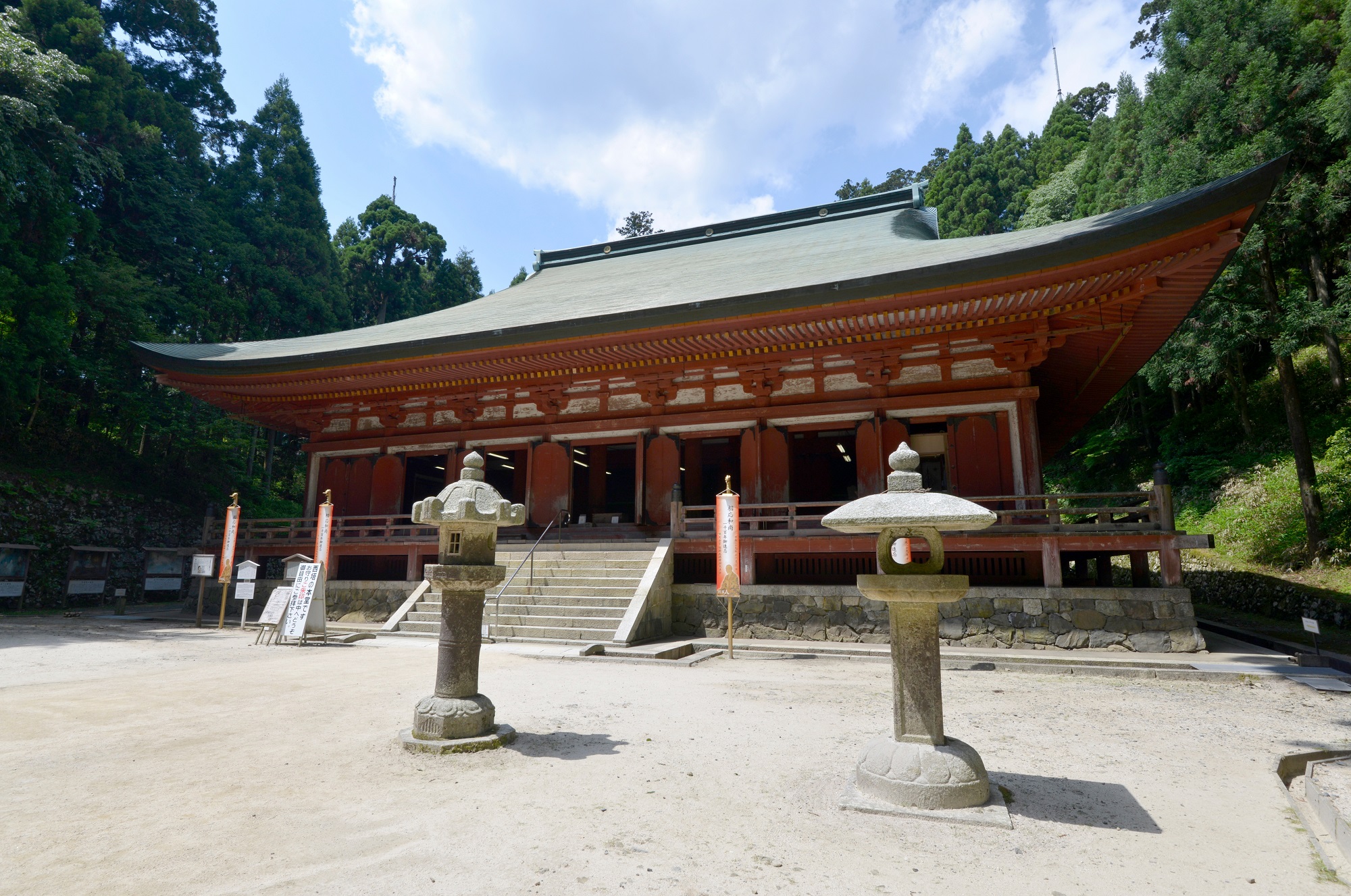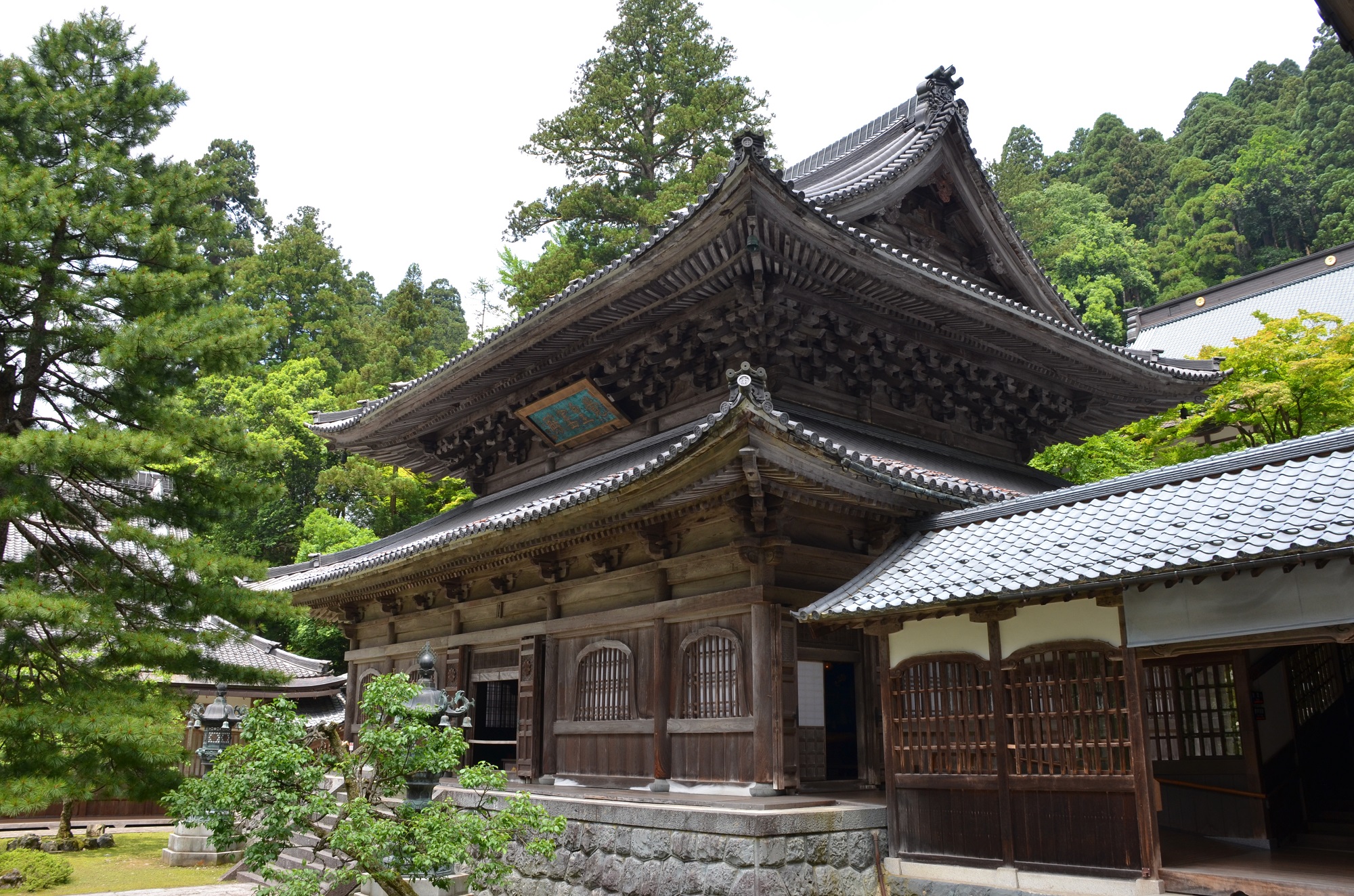Temples & Shrines/寺院・神社
About Temples and Shrines
Japan is home to countless temples and shrines, and although they may appear similar, they play different roles in Japanese religious and spiritual life. Since ancient times, Japanese people have believed that the kami (deities or spirits) reside in everything, including thunder, rain, and other weather phenomena, mountains, oceans, trees, and stones. The purpose of shrines (or jinja) is to worship these deities as part of the uniquely Japanese belief system called Shinto. Temples (or otera), on the other hand, are places for monks to live and practice Buddhism, a religion that originated in India and was introduced to Japan in the 6th century by way of China and the Korean peninsula.
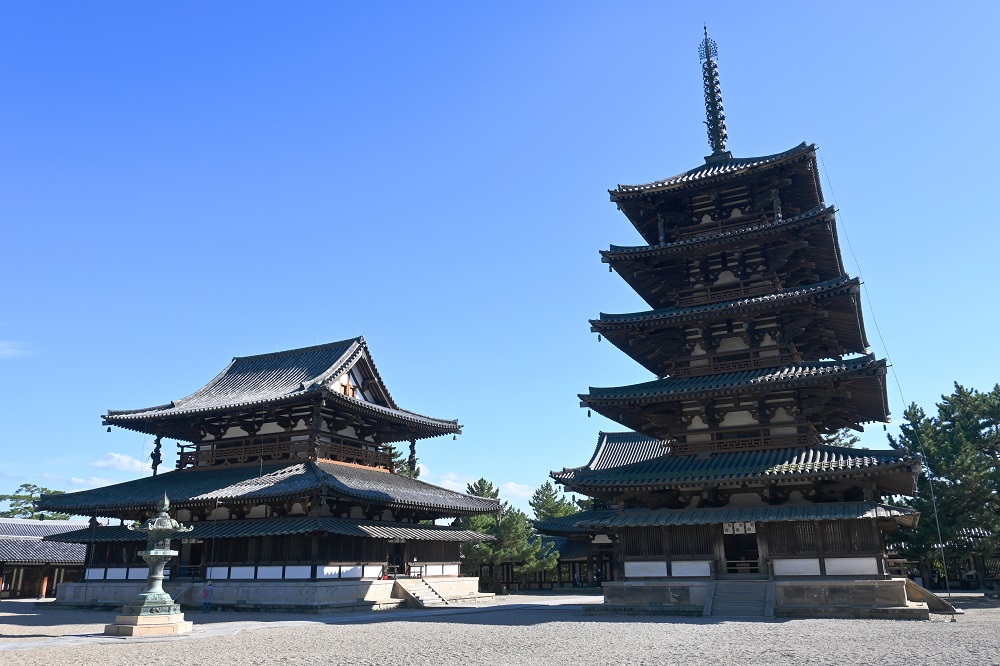
The object of worship at a temple is the Buddha, and temples generally have a sanmon gate at the entrance, a to pagoda representing the Buddha, and a kondo main hall where the Buddha image is enshrined. In addition to spreading the teachings of the Buddha, monks manage temples and cemeteries and conduct funerals and memorial services.
Shrines generally have a torii gate at the entrance that leads into a sando road or path approaching the shrine. To the side of the sando is a temizuya purification booth, and at the end is the honden main hall where the deity is enshrined. Shinto priests called kannushi perform rituals, prayers, and shrine duties.
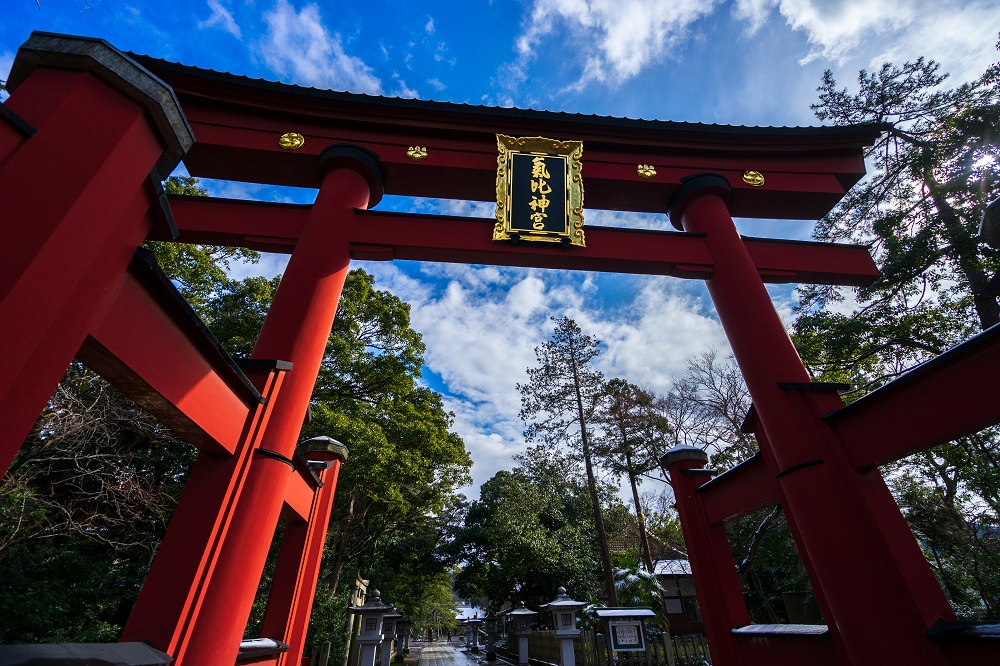
History and Types of Temples and Shrines
Buddhism came to Japan during the Asuka Period (592-710), and temples such as Horyuji and Shitennoji were built during this time. The Tendai and Shingon sects were introduced from Tang China in the Heian Period (794-1185), leading to the opening of the temple complexes at Mt. Hiei and Mt. Koya. Buddhism spread among both the samurai and common folk during the Kamakura Period (1185-1333), resulting in the development of many sects such as Jodo-shu (Pure Land), Jodo Shin-shu (True Pure Land), and Nichiren. The Soto and Rinzai sects, which advocate the attainment of enlightenment through Zen meditation, were also introduced during this period.
Shinto is an ancient Japanese religion that teaches that the kami (deities or spirits) reside in all things. With no official founder or fixed set of teachings to follow, Japanese people worshiped mountains, giant trees, and other elements of their natural surroundings as deities. Gradually they began to establish places to hold rituals and built shrines, and came to believe that the deities resided in these shrines. Shrines have six different designations: jingu, miya, daijingu, taisha, jinja, and sha, which indicate the level of prestige. Jingu enshrine the ancestral deities and sacred objects of the imperial family. When the term Jingu is used by itself, it refers to Ise Jingu.

Visiting Temples and Shrines
The standard ways to visit temples and shrines are as follows: (Practices may vary depending on the temple or shrine)
Visiting a temple
・Bow at the temple gate and step over the threshold without stepping onto it.
・Rinse your hands and mouth at the purification booth (which may be closed to prevent the spread of COVID-19).
・If there is an incense burner to offer incense, purify yourself with the smoke.
・Approach the main hall and stand in front of the temple’s principal image, place your offering in the collection box, press your hands together, and say a silent prayer.
・Bow and leave the main hall.
*Press your hands together silently. Do not clap.
Visiting a shrine
・Bow at the shrine gate and walk along the edge of the sando route to the main hall. The middle of the road is reserved for the deity.
・Rinse your hands and mouth at the purification booth (which may be closed to prevent the spread of COVID-19).
・Proceed to the front shrine (haiden) and give an offering. If there is a bell, ring it.
・Make two deep bows, clap your hands twice, bow once again, and leave the front shrine.
*You can express your wishes at the front shrine at any time.
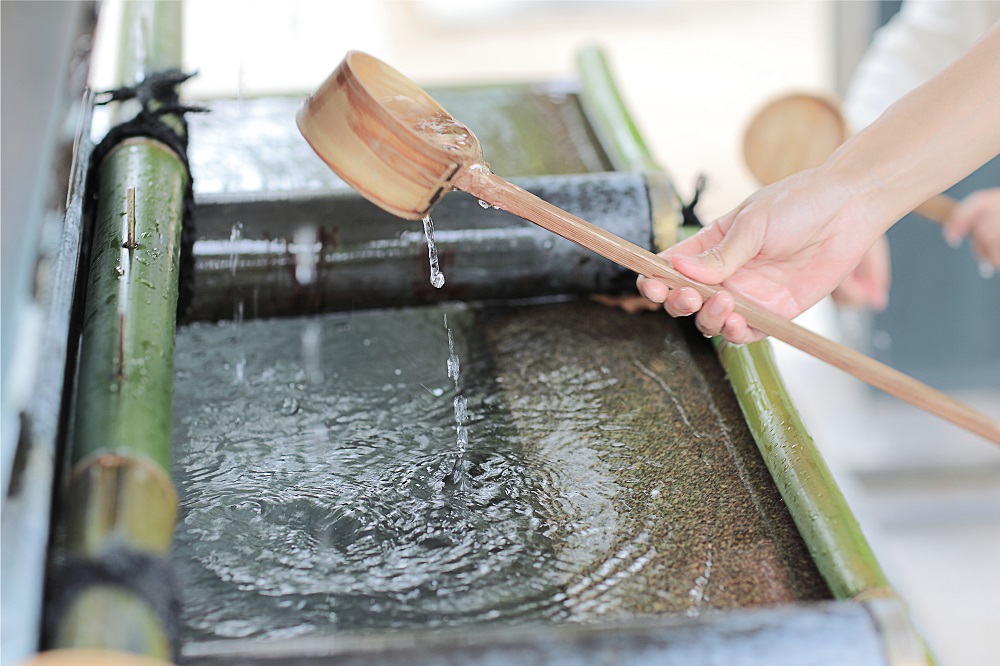
Destinations
Atsuta Shrine/熱田神宮(Aichi)
Built in the year 113 (the 43rd year of Emperor Keiko's reign), Atsuta Shrine (Atsuta Jingu) has a history dating back over 1,900 years. As the second most sacred shrine in Japan after Ise Shrine (Ise....
Osu Kannon/大須観音(Aichi)
Osu Kannon is one of Japan’s three most prestigious Kannon sacred sites, along with Asakusa Kannon in Tokyo and Tsu Kannon in Mie Prefecture. Founded by Noshin-Shonin in 1324, the main object of worsh....
Zenkoji Temple/善光寺(Nagano)
Zenkoji Temple dates back over 1,400 years and has been widely known and endeared since ancient times as a temple not affiliated with any particular religious sect, but rather welcoming to people of a....
Ise Jingu/伊勢神宮(Mie)
During the Edo Period (1600-1868), it became popular for people to partake in “okage mairi” processions, during which large groups of people flocked to worship together at Ise Jingu Shrine. During thi....
Kumano Kodo/熊野古道(Mie)
The Kii Mountain Range is home to the three sacred sites of Kumano Sanzan (Three Kumano Shrines), Koyasan (Mt. Koya), and Yoshino-and-Omine, which have nurtured various forms of faith, including Shint....
Enryakuji Temple/比叡山延暦寺(Shiga)
Hieizan Enryakuji is the head temple of the Tendai sect of Buddhism in Japan, and its vast temple area stretches out across Mt. Hiei. The temple is said to have been founded in 785, at the end of the ....
Eiheiji/永平寺(Fukui)
Eiheiji Temple, founded in 1244 by Zen Master Dogen, is a Zen training center and the head temple of the Soto sect of Buddhism in Japan. Located deep in the mountains in a verdant natural setting, the....

